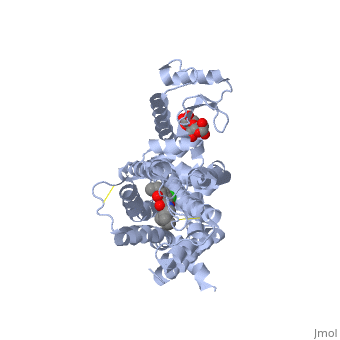This is a default text for your page Sandbox1595. Click above on edit this page to modify. Be careful with the < and > signs.
You may include any references to papers as in: the use of JSmol in Proteopedia [1] or to the article describing Jmol [2] to the rescue.
Structure
Disease and Relevance
In the United States, approximately 9.3% of people 12 years old and above struggle from some form of addiction (Treatment Statistics, 2011). Addiction is not only detrimental to the social and behavioral aspects of the person’s life, but it also affects their brain chemistry. Specifically, the use of a wide range of substances like alcohol and illicit drugs interact with dopamine receptors and induce an abnormally high level of Dopamine to flood the brain. Because Dopamine is the primary neurotransmitter in the human reward pathway, the brain begins to associate alcohol or other substance that cause the influx with the huge chemical reward. Initial use is usually caused by the desire to obtain their positive reaction but addiction occurs when the brain no longer functions optimally without the dopamine surge caused by the substance. Because addiction is not only caused by psychological desire but also biological desire it rapidly becomes a detrimental disease to those who suffer.
Malfunction of dopamine receptors also plays a role in a wide array of other neurological problems. There is a delicate balance that must be maintained for the human brain to function at the peak of it’s ability. For example, the psychological disorder schizophrenia is believed to be caused in part by a malfunction in multiple dopamine receptors that result in much higher than normal levels of dopamine, whereas the debilitating disease Parkinson’s is believed to caused in part by the dopamine receptors failing to release a sufficient amount of the neurotransmitter. In the case of schizophrenia it is currently accepted that a wide range of the positive symptoms, including hallucinations and delusions, originate because of an increased level of subcortical dopamine which in turn augments the D2 receptors and leads to even more release in areas of the brain like the nucleus accumbens. Some of the negative effects which include inability to form sentences and lack of outward motivation are hypothesized to be triggered by the reduced activation of D1 receptors (Brisch et al, 201). Parkinson’s, on the other hand, is caused in part by the destruction of dopamine receptors and thus the loss of a critical amount of the neurotransmitter. Dopamine is vital in relaying messages from the brain to the muscular system and disrupting this mechanisms produces tremors and a lack of balance which are common symptoms of the disease (Kim, 2002).
Structural highlights
This is a sample scene created with SAT to by Group, and another to make of the protein. You can make your own scenes on SAT starting from scratch or loading and editing one of these sample scenes.

